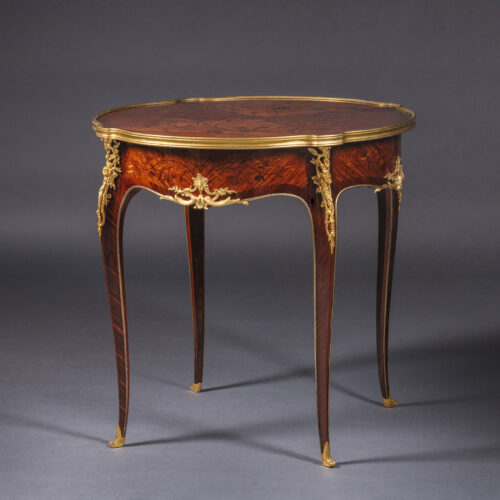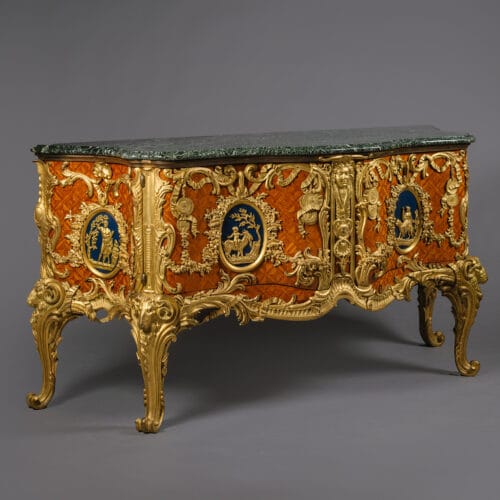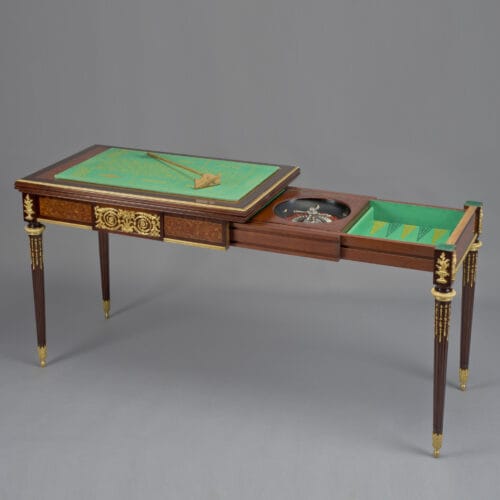François Linke
A Rare and Important Gilt-Bronze Mounted Mahogany Centre Table with ‘Pietre Dure’ Specimen Marble Top
POA
A Rare and Important Gilt-Bronze Mounted Mahogany Centre Table with 'Pietre Dure' Specimen Marble Top, By François Linke, Paris, Index Number 616. This...
Dimensiones
Altura: 76 cm (30 in)Diameter: 106 cm (42 in)
Descripción
A Rare and Important Gilt-Bronze Mounted Mahogany Centre Table with ‘Pietre Dure’ Specimen Marble Top, By François Linke, Paris, Index Number 616.
This magnificent centre table has a ‘Pietre Dure’ hardstone mosaic top incorporating various precious marbles. The frieze is mounted to each side with a rectangular gilt-bronze plaque cast in relief with putti representing sculpture. The tapering legs are headed by swagged acanthus garlands running to leaf-cast and pomegranate-form feet.
The surround of the gilt-bronze top with engraved signature ‘F. Linke’.
The remarkable marble top is comprised of radiating roundels and spears of precious marble including levanto rouge, violet brocatelle, viollette de Villette, vert d’Irlande, vert antique, which are all inset within a bleu Belge marble ground. It is an excellent example of the art of ‘Pietre Dure’ (or hard stones) which has been prized throughout the history of the decorative arts and admired for its beauty and technical prowess akin to ‘painting in stone’.
The origins of the technique can be traced to the classical world when precious stones were sourced from across the Roman Empire, from Algeria to the Alps, and was revived towards the end of the 16th century following excavations of archaeological sites. Marbles and hardstones were prized for their connection to Ancient Rome, and fragments of especially precious stones, such as porphyry excavated from the Roman Forum, were reworked into ‘Pietre Dure’ objects and incorporated into mosaic tabletops. The fashion for ‘Pietre Dure’ led to the establishment of workshops in Rome, soon followed by Florence.
The geometric inlay to the present table is inspired by early renaissance ‘intarsias’ created by the Cosmati family, who created works by taking marble from ancient Roman ruins, and arranging the fragments in geometrical decorations.
The magnificent marble tabletop was designed to complement the table base which is richly adorned with neoclassical attributes, such as the swagged acanthus leaves which are associated with enduring life. The frieze of the table to four sides is applied with finely cast gilt-bronze plaques cast in relief with cherubs which are depicted in the divine pursuits of painting and sculpting. The Greco-Roman references are reinforced by the design of the table base which is conceived in the neoclassical style based on the ‘Table des Muses’ by Jean-Henri Riesener, which was made for Louis XVI by Jean-Henri Riesener and now on display at the Petit Trianon, Versailles.
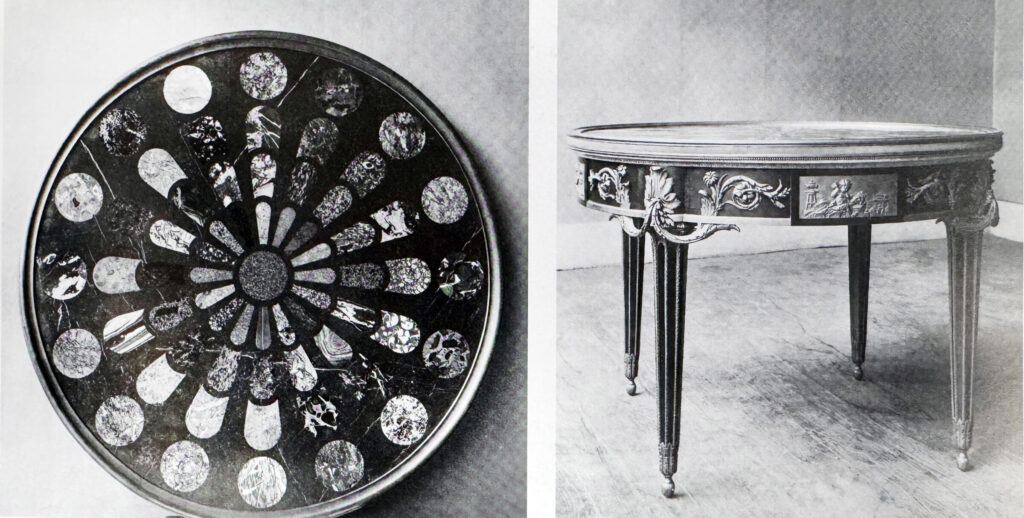
A photograph of a table of this model in the Linke Archive, illustrated in C. Payne, ‘François Linke: The Belle Epoque of French Furniture’, Woodbridge, 2003, p. 495, pl. 616
The maker of the table is François Linke who is the most famous and highly prized Parisien ébéniste of the Belle Epoque. Linke is renowned for the exceptional quality of his craftsmanship, use of rich materials and the fine proportions of his creations. Linke’s title for this table ‘Grand guéridon Louis XVI, pietment de la table Muse, dessus marbre assemblés, bronzes dorés mats’ also refers to its design being based on the celebrated ‘Table des Muses’ by Riesener. The Linke Archives record this table by its Index Number 616 and it is a rare model with only two examples known to have been made.
Francia, alrededor de 1900.
Fecha
Alrededor de 1900
Origen
Francia
Firma
The surround of the gilt-bronze top with engraved signature 'F. Linke'.
François Linke (1855 - 1946) fue el ebanista parisino más importante de finales del siglo XIX y principios del XX, y posiblemente el más cotizado de su época.
Nació en 1855 en el pequeño pueblo de Pankraz, en la actual República Checa. Los registros indican que Linke realizó un aprendizaje con el maestro ebanista Neumann, y que en 1875, a la edad de 20 años, llegó a París, donde vivió hasta su muerte en 1946.
Se sabe que los incipientes talleres de Linke estaban activos en París, en el Faubourg St. Antoine, ya en 1881, y durante esta época suministraba muebles a otros fabricantes más establecidos, como Jansen y Krieger.
La calidad de la artesanía de Linke no fue superada por ninguno de sus contemporáneos y alcanzó su punto álgido con su espectacular stand en la Exposición Universal de París de 1900, donde su Grand Bureau se llevó la medalla de oro. Apostó su fortuna y su reputación en este stand, exponiendo varios muebles impresionantes con montajes escultóricos de la más excepcional calidad y proporción. Su apuesta funcionó y su reputación se consolidó hasta el punto de que Linke siguió siendo la casa de muebles más importante de París hasta la Segunda Guerra Mundial.
Como informó el Art Journal en 1900 sobre el stand de Linke
La obra del Sr. Linke... fue un ejemplo de lo que se puede hacer buscando la inspiración entre los ejemplos clásicos de Luis XV y XVI sin copiar en gran medida estas grandes obras. La obra de M. Linke era original en el verdadero sentido de la palabra, y como tal se recomendaba al buscador inteligente de las cosas realmente artísticas de la Exposición. Se empleó un maravilloso talento en la realización de los magníficos muebles expuestos....'
La formación del estilo distintivo de Linke fue posible gracias a su colaboración con el escultor Léon Messagé. Juntos, Linke y Messagé diseñaron muebles para el stand de Linke en la exposición de 1900, con exuberantes figuras alegóricas fundidas en altorrelieve, que ejemplificaban la capacidad de Linke para fusionar a la perfección los diferentes medios de la talla en madera, el bronce y la marquetería en un todo dinámico y unificado.
En la actualidad, Linke es más conocido por la excepcional calidad de su trabajo, así como por su individualismo e inventiva. Toda su obra tiene los montajes más finos y lujosos, aplicados muy a menudo a carcasas comparativamente sencillas. La brillantez técnica de su obra y el cambio artístico que representó nunca se repitieron.
Bibliografía:
Payne, Christopher. François Linke, (1855 - 1946), The Belle Époque of French Furniture, Antique Collectors' Club, (Woodbridge, UK), 2003.
Meyer, Jonathan. Great Exhibitions - London, New York, Paris, Philadelphia, 1851-1900, Antique Collectors' Club, (Woodbridge, UK), 2006; pp. 298 - 300.
Ledoux - Lebard, Denise. Les Ébénistes du XIXe siècle, Les Editions de l'Amateur, (París), 1984; pp. 439-43.
Revue Artistique & Industrielle, (París), julio-agosto de 1900.
Coral Thomsen, D. (ed), The Paris Exhibition 1900, The Art Journal, 1901; p.341.
C. Payne, ‘François Linke: The Belle Epoque of French Furniture’, Woodbridge, 2003, p. 495, pl. 616 (a table of this model illustrated).
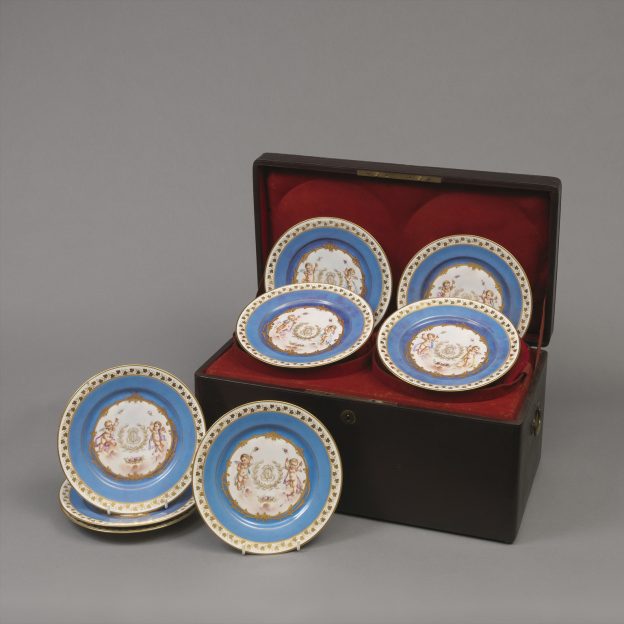




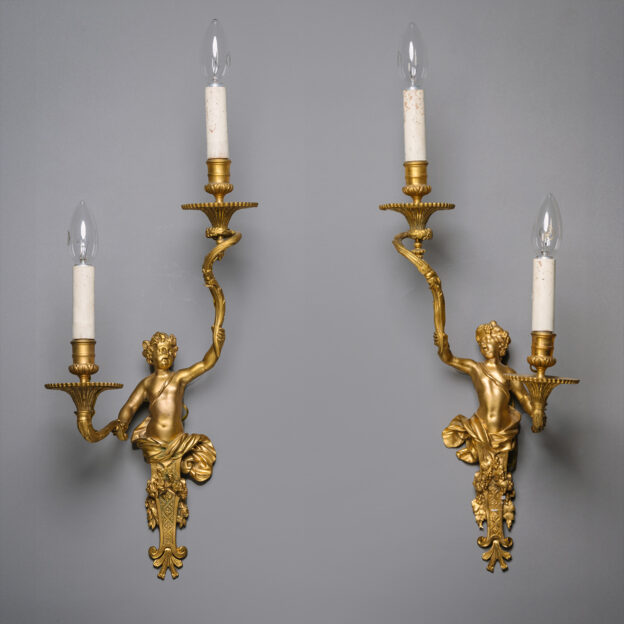
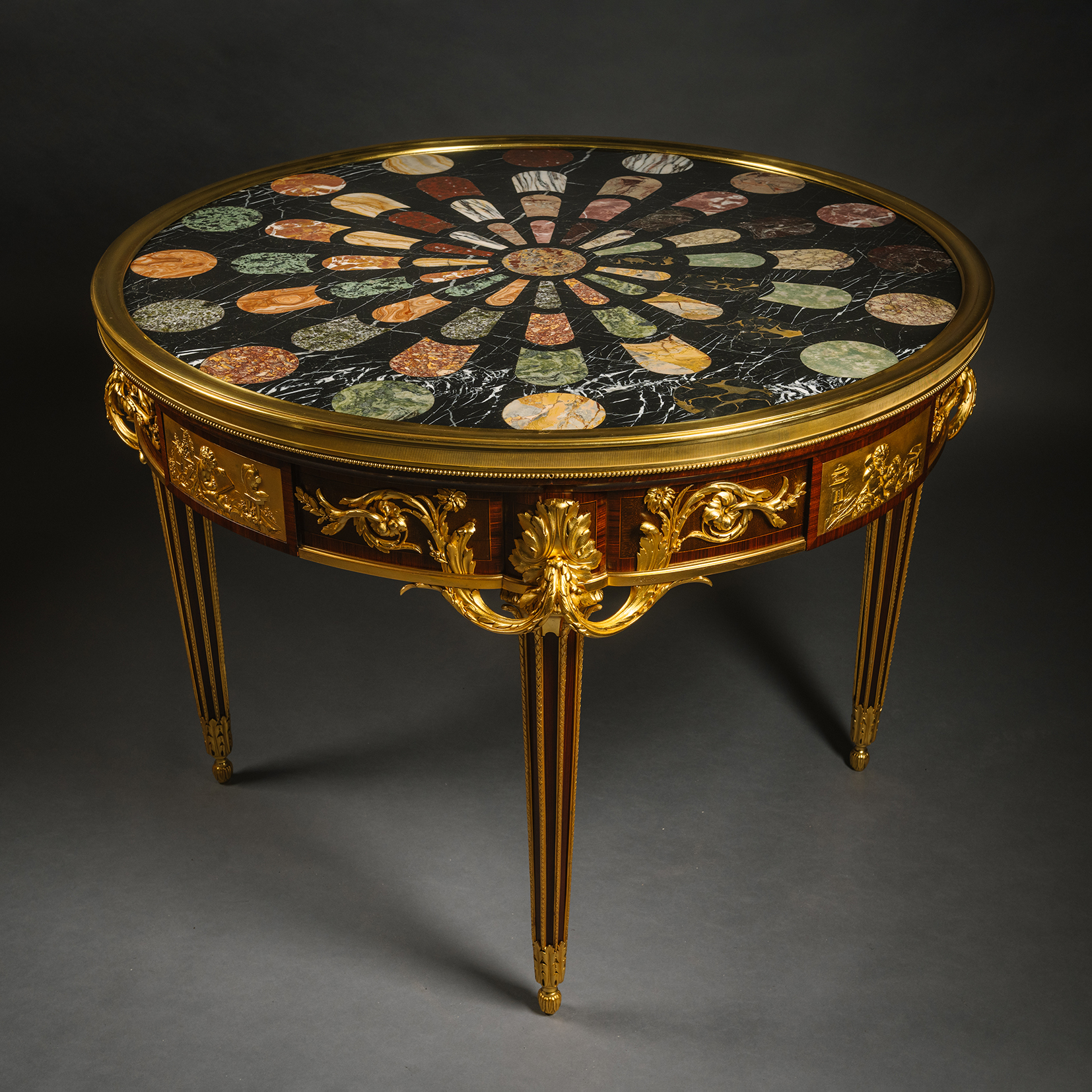
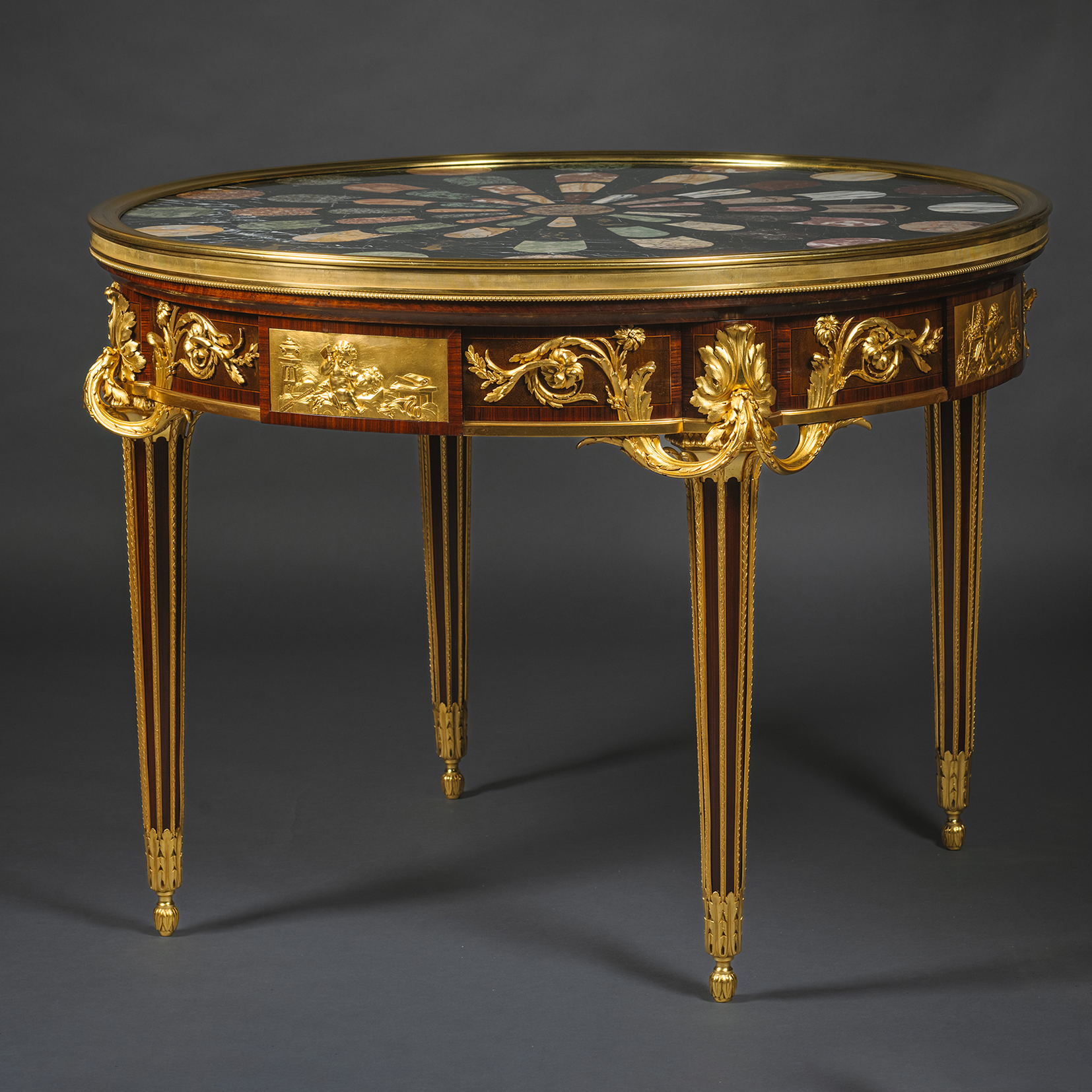
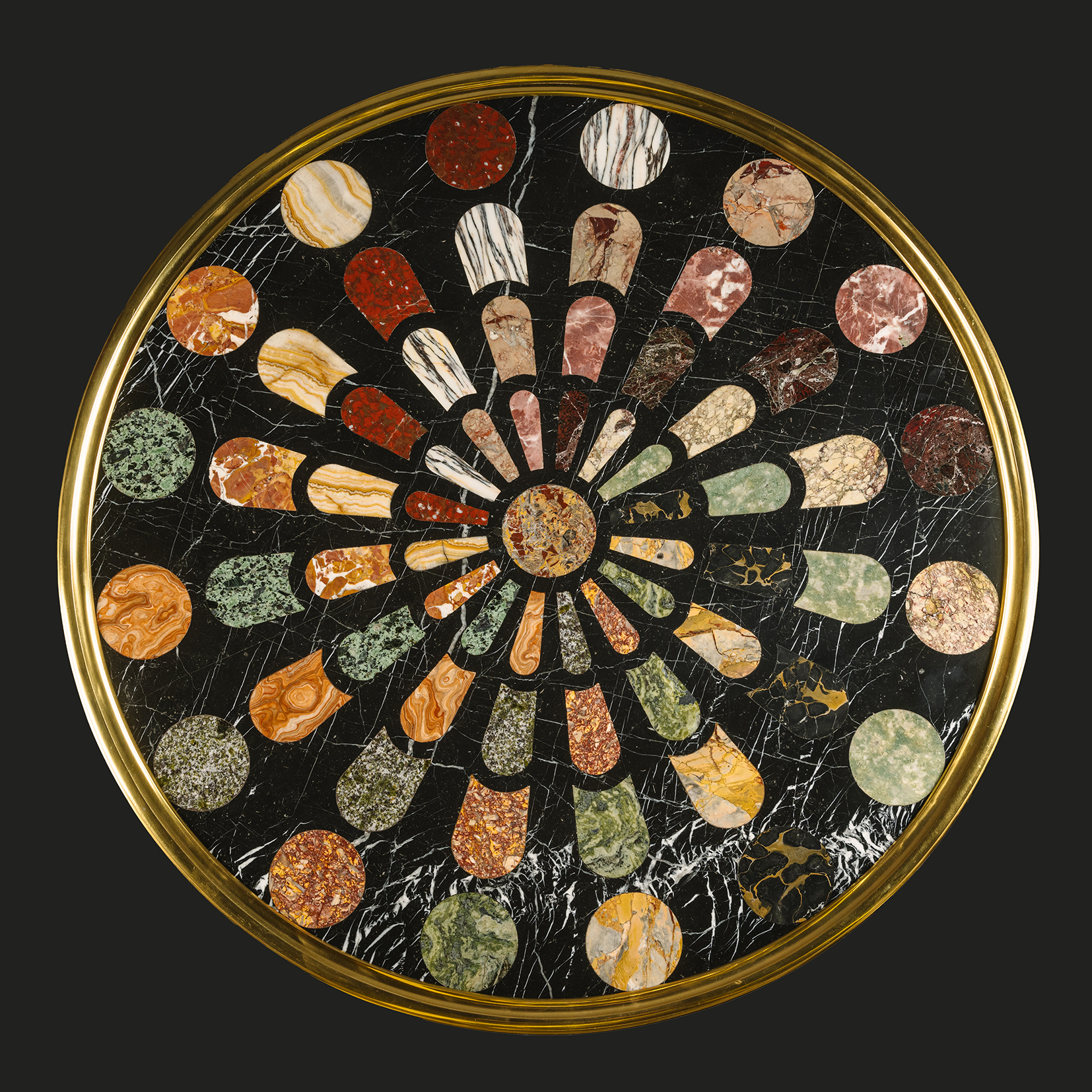
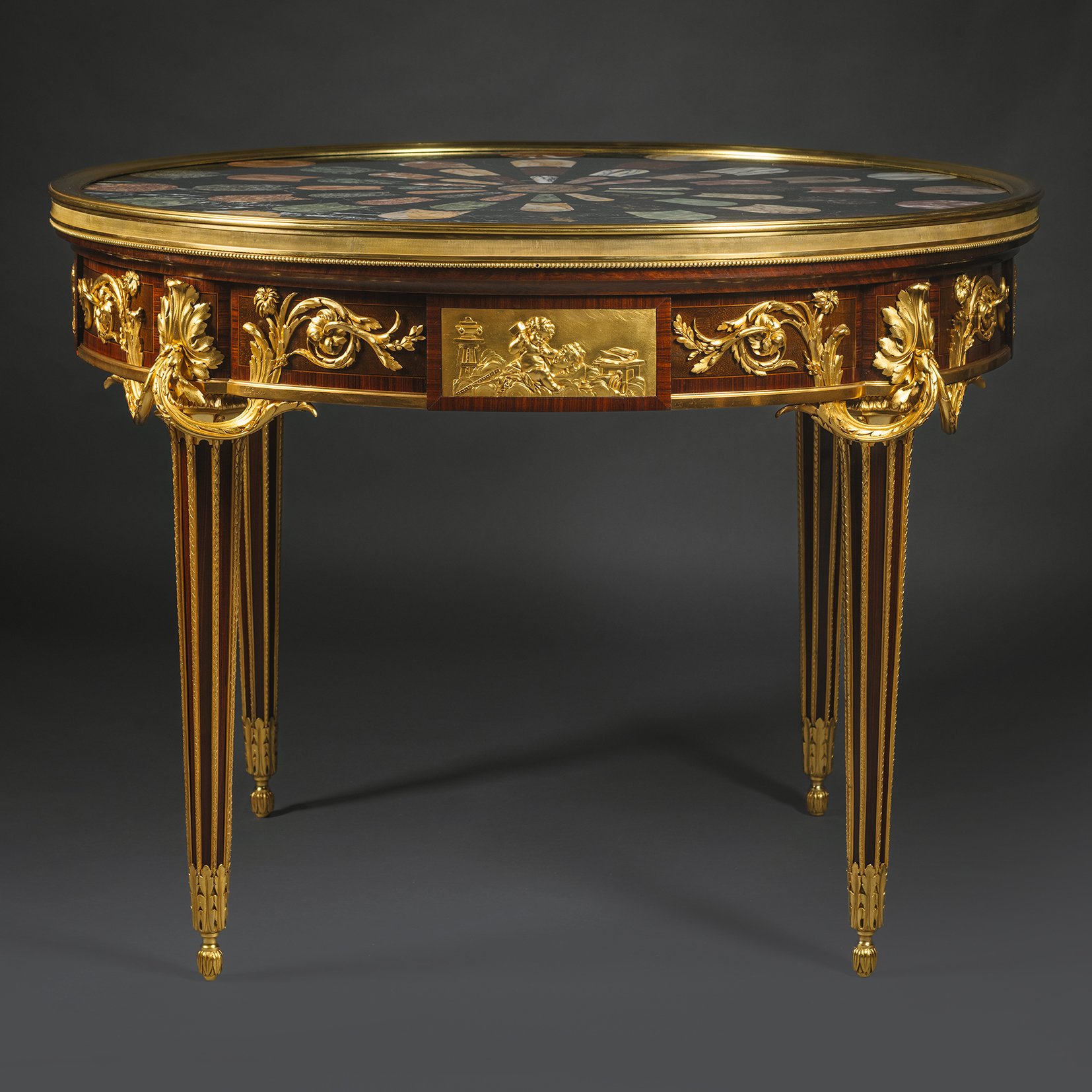
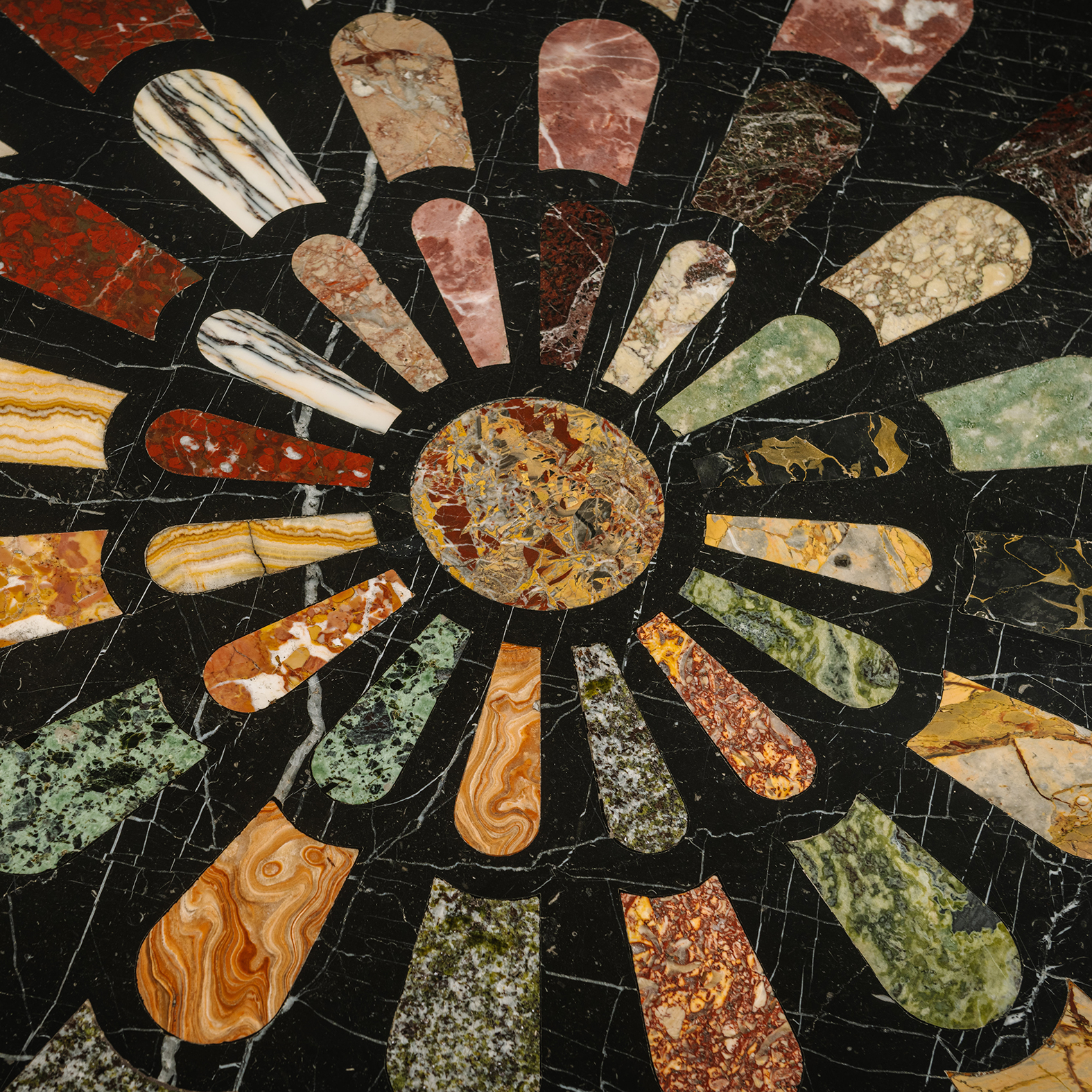
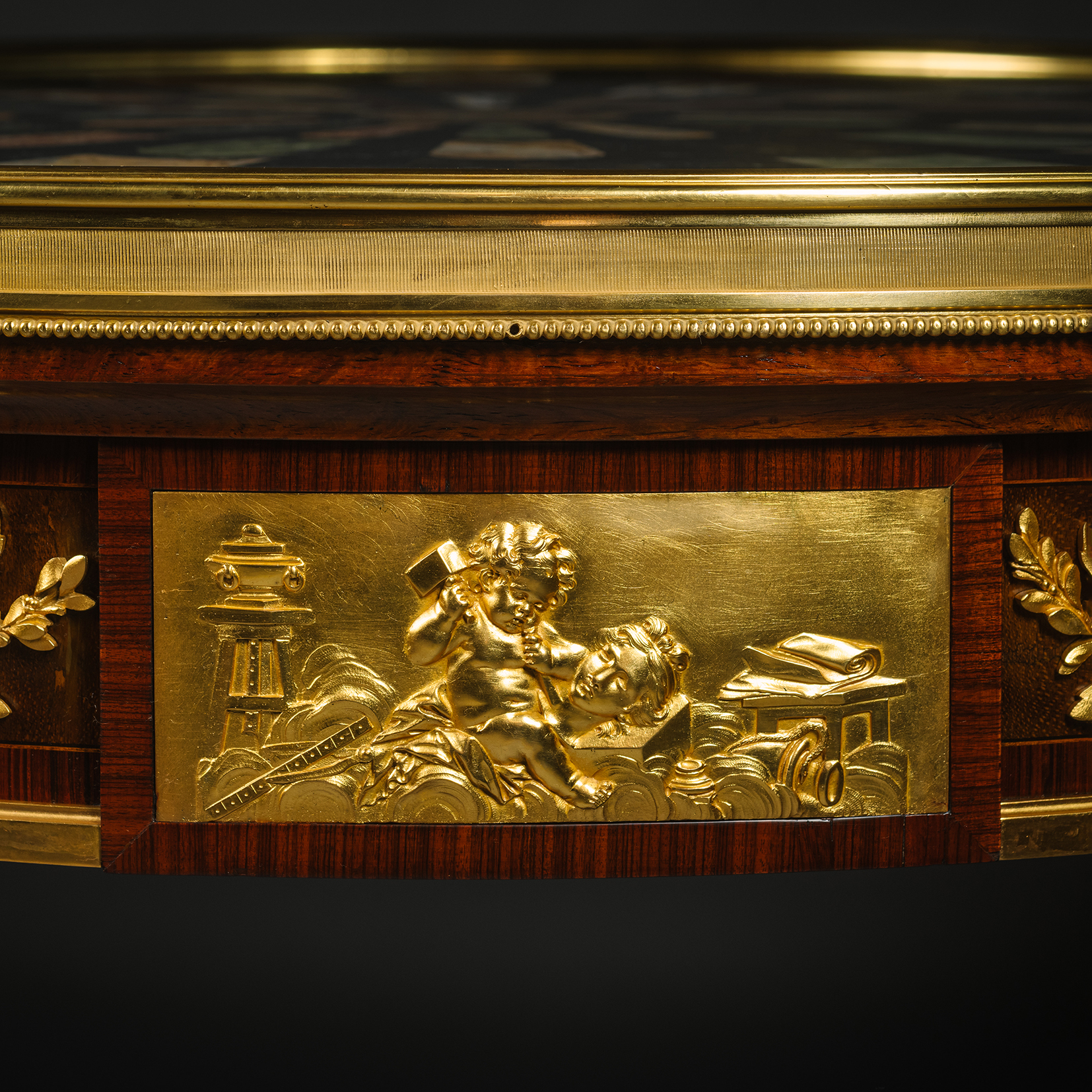
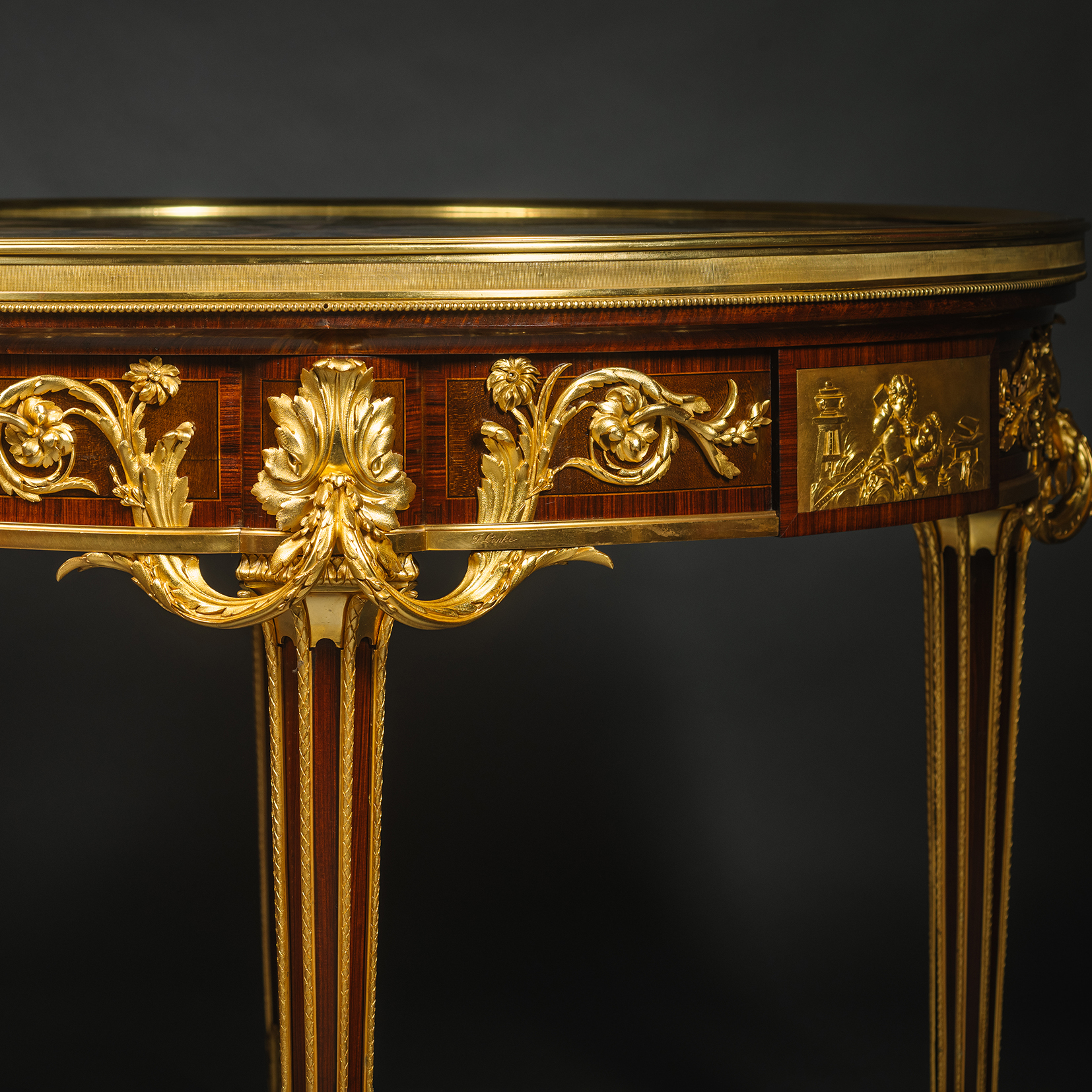
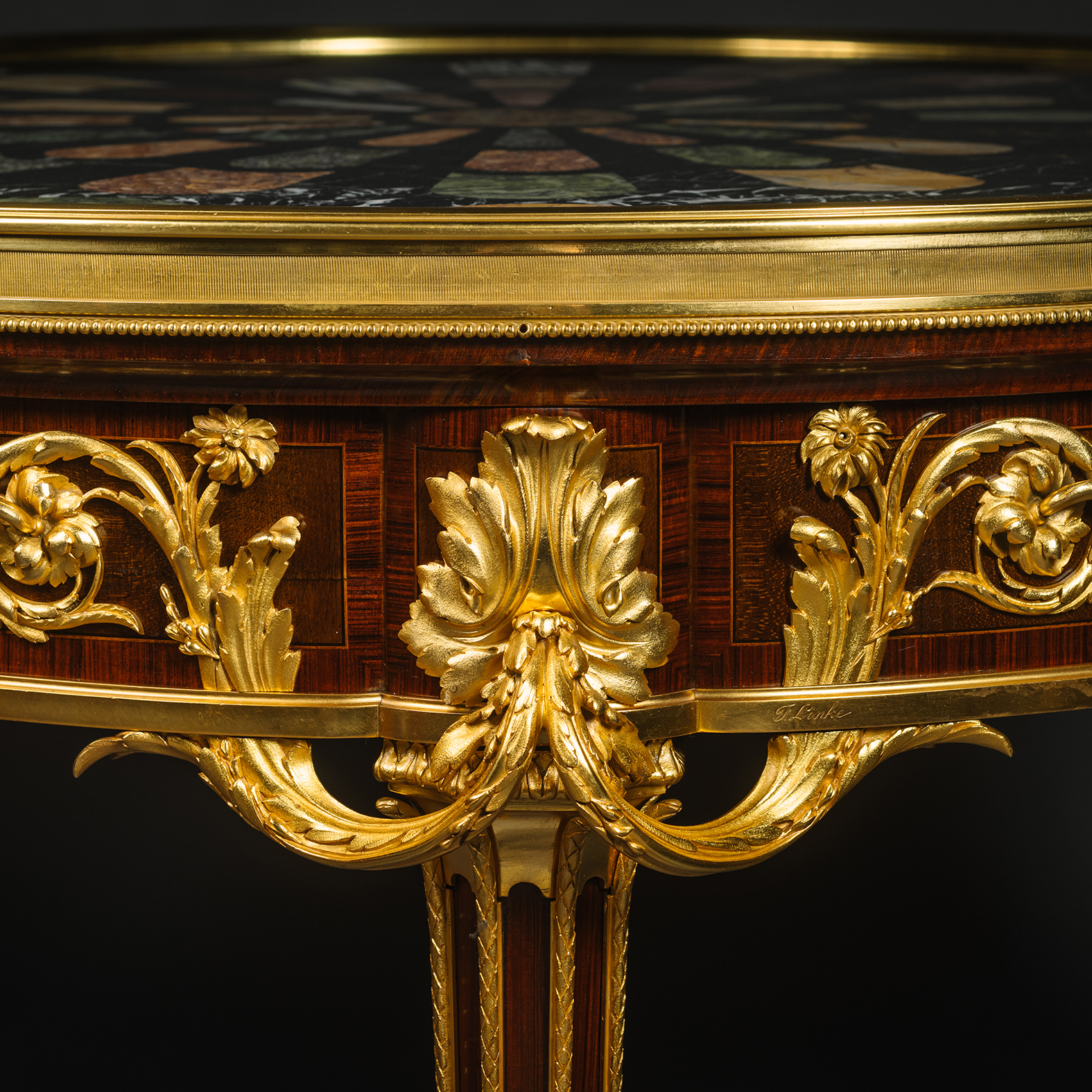
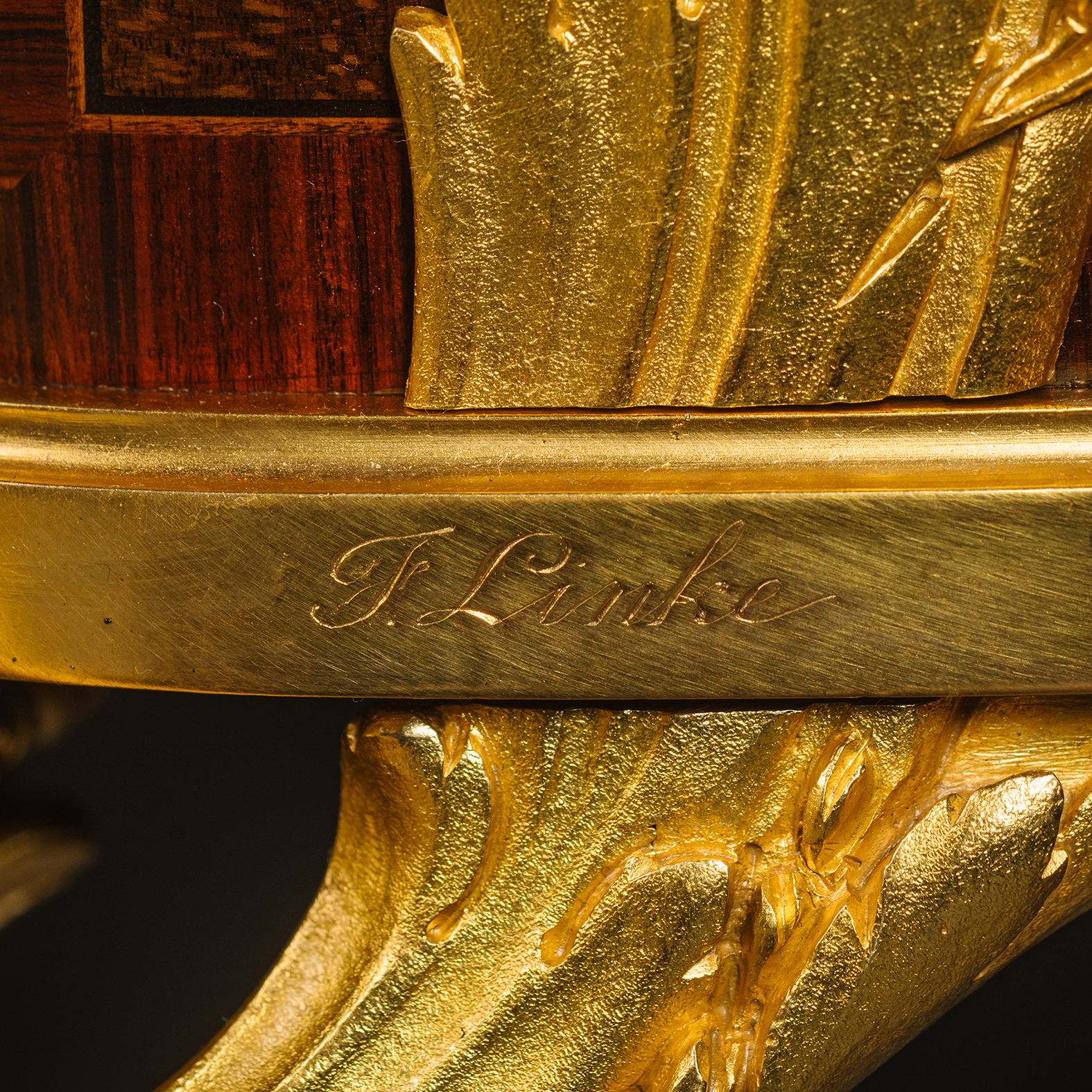

 Imprimir
Imprimir